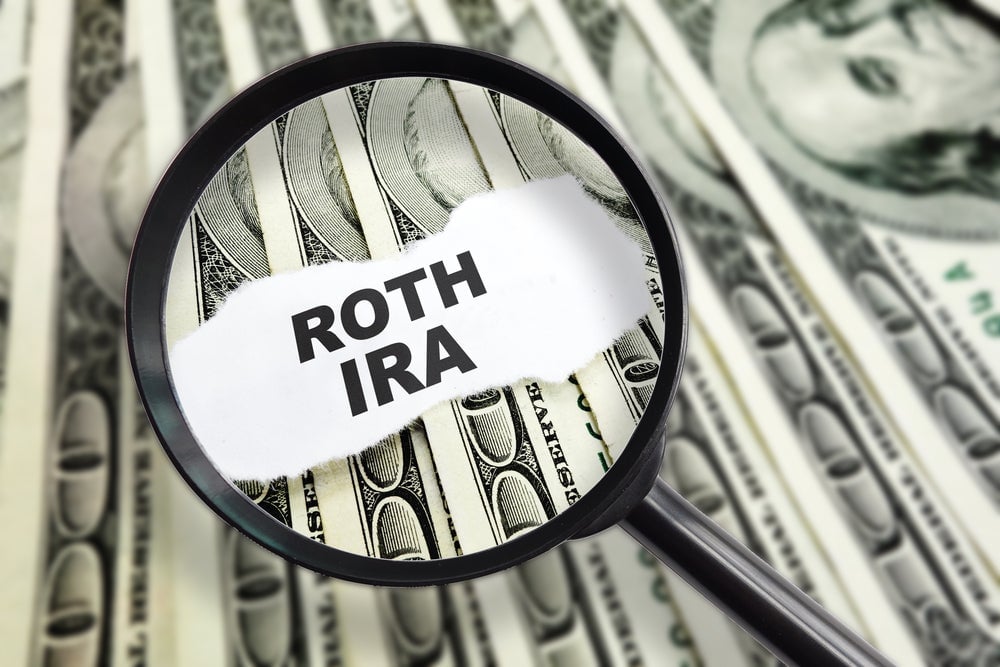You have thousands of different Roth IRA investment options, so it can seem like a difficult decision. From mutual funds to stocks and bonds to exchange-traded funds (ETFs), you might not know exactly how to invest. You can even invest in cryptocurrency and certificates of deposit (CDs). With all the options available to put into a Roth IRA, how do you know what should go into your Roth, exactly?

MarketBeat.com – MarketBeat
But dividend stocks in a Roth IRA? Sure, why not?
Let’s find out why you might want to opt to plunk dividend stocks into your portfolio.
What Are Dividend Stocks?
Dividend stocks come from companies that make regular payouts to shareholders, usually in the form of cash payments. However, companies that offer dividends might also decide to offer dividends in other forms, such as by issuing more stock to investors.
Most companies pay out dividends four times a year on a quarterly basis. However, some companies pay their dividends semi-annually (twice per year), annually (once per year) or on no set schedule, which are called “irregular dividends.”
For example, a company that pays $3 in annual dividends and has a stock price of $100 would have a dividend yield of 3%.
There’s no “right” or “wrong” as to when you prefer to receive your dividends. However, if you plan to live off your dividends to pay for monthly expenses, you may want to take in dividends every month. On the other hand, if you choose to reinvest your dividends, which means that you invest in more company stock, you might wait until you retire to benefit from the payout on your investments.
What is a Roth IRA?
A Roth individual retirement account (IRA) is a retirement account in which you can invest after-tax dollars and enjoy tax-free-growth and withdrawals when you retire. However, there are some stipulations on Roth IRAs. Not just anyone can invest, nor can you contribute as much as you want to a Roth IRA.
Your ability to invest in a Roth IRA depends on your income level. This means that you have to stay below a certain income threshold in order to invest in a Roth. If you’re single, your modified adjusted gross income (MAGI), which is your adjusted gross income (AGI) plus a few other things (like exempt or excluded income and certain deductions), must be under $144,000 in 2022 to contribute to a Roth IRA. On the other hand, if you’re married and file jointly, your MAGI must be under $214,000 in 2022.
You’re also limited in your total contribution — $6,000 if you’re under age 50 and $7,000 if you’re age 50 or older. If you have other IRAs, you cannot contribute more than that amount for all of them combined.
You must also pay attention to withdrawal rules in order to get the most out of your investment. Withdrawals must be taken after age 59½ and five years after you’ve purchased your securities. However, there are exceptions to the early withdrawal penalty. For example, if you’re making a first-time home purchase, paying for college expenses or have expenses related to the birth or adoption of a child, you can withdraw your money early.
Pros and Cons of a Roth IRA
The pros and cons of a Roth IRA might seem pretty obvious — you save now and let money compound for later. However, let’s go over a few so you can make sure you’re choosing the right type of investment for your needs.
Pros of a Roth IRA
First, let’s walk though the benefits of a Roth IRA:
- Tax-free growth: Since you pay tax upfront, your earnings build tax-free through a Roth IRA. You won’t pay taxes on withdrawals, which means you can take out more when you withdraw, especially if you have a higher tax rate in retirement.
- No required minimum distributions: Unlike a traditional IRA, which requires that you take money out of the IRA starting at age 72, you do not have to pull out money from a Roth IRA by a certain age.
- Withdrawal options: You can withdraw money for other reasons if you need it as mentioned before, for first-time home purchases, paying for college expenses or for the birth or adoption of a child.
- Good for higher tax brackets: Do you think your tax rate will be higher in retirement? If this is the case, paying taxes ahead of time with Roth contributions might be your best bet. On the other hand, if you think your tax rate will be lower in retirement, you may want to use traditional contributions to defer taxes instead.
Cons of a Roth IRA
While most professionals are huge fans of a Roth IRA, there are still some downsides to think through before you choose to go the Roth IRA route. Let’s take a look:
- Upfront taxes: Paying taxes upfront may make you feel as if your money is sieving through your fingers instead of taking the costs off top like with a traditional IRA. It’s a good idea to consider whether you want to pay taxes now or later.
- Income limits: If you’re over the income limits, you’re out of luck. However, if you begin to approach the limits, you can phase out your investment. This means that you can contribute a little less than the maximum amount.
- Low maximum contributions: As mentioned above, you can only contribute $6,000 in 2022. Even though you can also contribute $7,000 if you’re 50 or older, it’s still far less than what you can contribute through other retirement savings plans. For example, For 2022, you can contribute elective contributions of $20,500 to a 401(k).
- You’re on your own: There’s no employer encouraging you to sign up for the company 401(k) when it comes to a Roth IRA. You have to take the initiative to invest by yourself, for yourself!
Taxes on Roth IRA Dividends
You can slip past annual taxes by investing through a Roth IRA. However, if you want to retire earlier than age 59 ½, a taxable brokerage account may be a better option because you can access your earnings at any time. However, in a regular investment account, you’ll either pay short-term capital gains, which is a tax levied on assets held for a period of 12 months or less. They are taxed like ordinary income — anywhere from 10% to 37%, depending on your income level.
Long-term capital gains, on the other hand, is a tax applied to assets held for more than a year. The long-term capital gains tax rates are 0%, 15% and 20% and depend on your income and are much lower than the ordinary income tax rate. If your income is low, you might qualify for the 0% long-term capital gains rates and won’t have to pay tax on your dividends.
When you hold your money in a Roth IRA, you will not pay any taxes on dividends that are reinvested in a Roth IRA. In short, dividends are not taxed on an annual basis, but with a regular taxable investment account, your dividends get taxed every year when you take the dividends.
Finding Dividend Stocks for Your Roth IRA
How do you choose the right dividend stocks for your Roth IRA? Investing for retirement means that you’ll build your nest egg over several decades, so you’ll want to target stable companies that have strong metrics. The Dividend Kings, which have increased their dividends for the past 50 years in a row, or the Dividend Aristocrats, might be one way to identify companies that fit your goals of dividend growth over time.
Learn more: Dividend Kings vs. Dividend Aristocrats
Take a look at some solid Dividend Aristocrats you may want to consider adding to your portfolio:
Should You Invest in Dividend Stocks in Your Roth IRA?
So, should you build a dividend stock portfolio through a Roth IRA?
The short answer: It all depends on your goals and investment preferences. It’s also important to realize that dividend stocks may not experience the same returns as growth stocks, which may offer a rocket to returns.
Learn more: Are Dividend Stocks Worth It?
Credit: Source link



